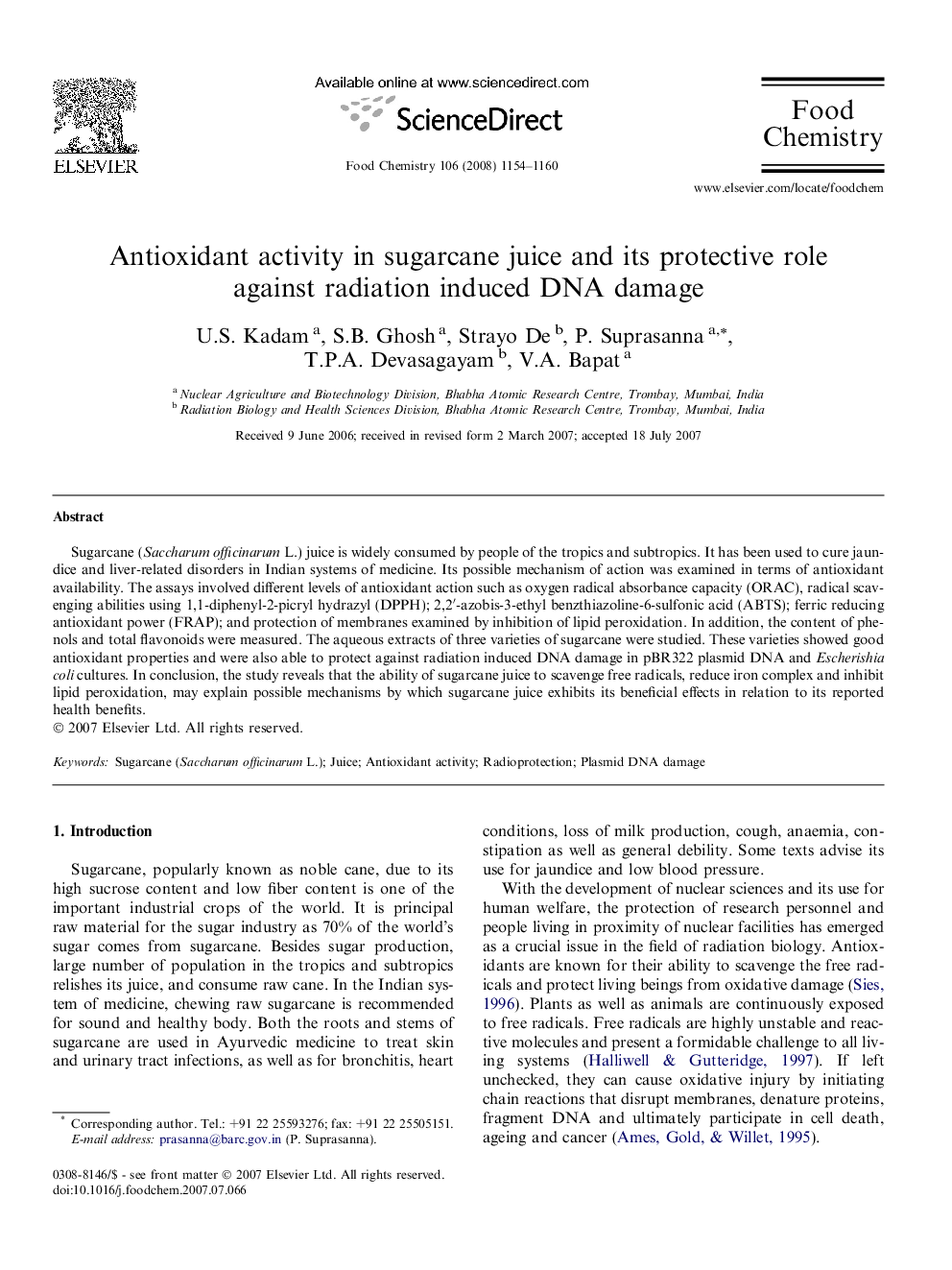| Article ID | Journal | Published Year | Pages | File Type |
|---|---|---|---|---|
| 1189605 | Food Chemistry | 2008 | 7 Pages |
Sugarcane (Saccharum officinarum L.) juice is widely consumed by people of the tropics and subtropics. It has been used to cure jaundice and liver-related disorders in Indian systems of medicine. Its possible mechanism of action was examined in terms of antioxidant availability. The assays involved different levels of antioxidant action such as oxygen radical absorbance capacity (ORAC), radical scavenging abilities using 1,1-diphenyl-2-picryl hydrazyl (DPPH); 2,2′-azobis-3-ethyl benzthiazoline-6-sulfonic acid (ABTS); ferric reducing antioxidant power (FRAP); and protection of membranes examined by inhibition of lipid peroxidation. In addition, the content of phenols and total flavonoids were measured. The aqueous extracts of three varieties of sugarcane were studied. These varieties showed good antioxidant properties and were also able to protect against radiation induced DNA damage in pBR322 plasmid DNA and Escherishia coli cultures. In conclusion, the study reveals that the ability of sugarcane juice to scavenge free radicals, reduce iron complex and inhibit lipid peroxidation, may explain possible mechanisms by which sugarcane juice exhibits its beneficial effects in relation to its reported health benefits.
